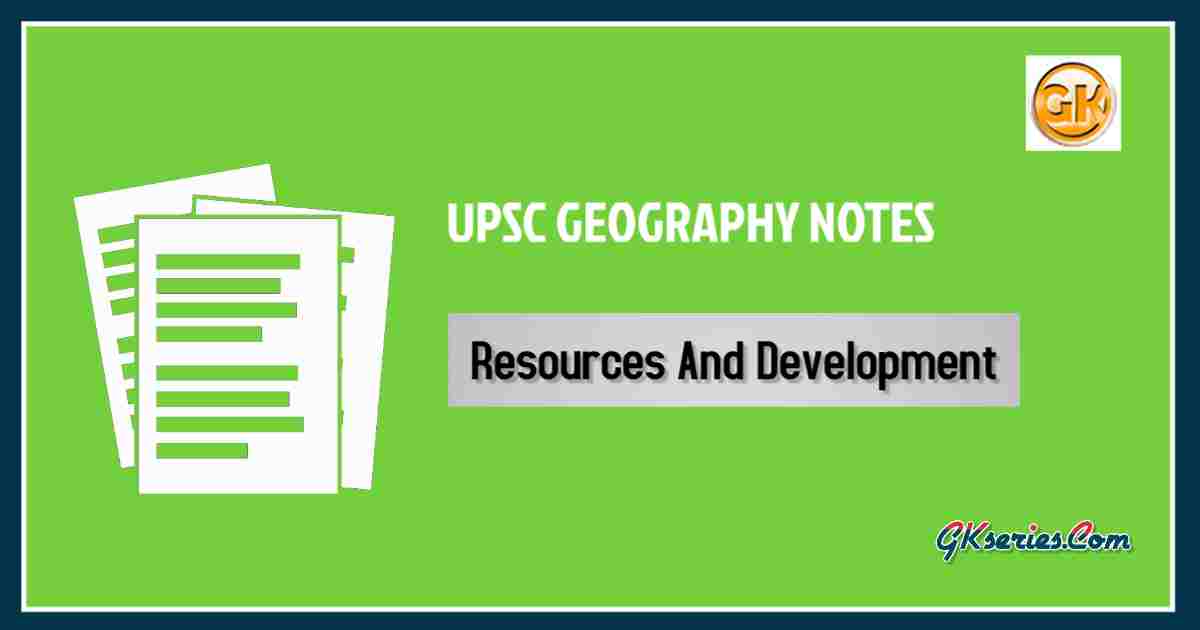
A natural resource is an element of the earth that can be used to provide economic benefits. When we talk about resources, we usually think of land, timber, oil and mineral deposits. These substances called natural resources lose their productive capacity over time. Resources are essentially the materials found in the environment that could be useful for human exploitation. Resources can be classified in the following ways:
- On the basis of origin — biotic and abiotic
- On the basis of exhaustibility — renewable and non-renewable
- On the basis of ownership — individual, community, national and international
- On the basis of the status of development — potential, developed stock and reserves
On the basis of origin —
Classification of resources can be done on the basis of their origin. On the basis of origin, resources are classified as biotic resources and abiotic resources.
Biotic resources are those resources which are composed of living things. Eg, human being, cattle, fisheries etc. Many plants and animals are raised for food, clothing, medicine by human beings.
Abiotic resources are those resources which are composed of non-living things. Eg rocks, metals etc.
On the Basis of Exhaustibility —
1. Renewable Resources: The resources which can be renewed or reproduced by physical, chemical or mechanical processes are known as Renewable or Replenishable Resources.
Renewable resources can be replaced by natural processes as quickly as humans use them.
The renewable resource may further be divided into continuous or flow. Eg: Solar and wind energy, water, forests and wildlife, etc.
2. Non-Renewable Resources: Non-Renewable Resources occur over a very long geological time. These resources take millions of years in their formation.
Nonrenewable resources exist in fixed amounts. They can be used up. Examples include fossil fuels such as coal.
Some of the resources like metals are recyclable and some like fossil fuels cannot be recycled and get exhausted with their use. Eg: Minerals and fossil fuels.
On the Basis of Ownership —
1. Individual Resources are owned privately by individuals. In villages people own lands whereas in urban areas people own plots, houses and other properties. Eg: Plantation, pasture lands, ponds, water in wells etc.
2. Community Owned Resources are accessible to all the members of the community. Eg: Grazing grounds, burial grounds, public parks, picnic spots, playgrounds etc.
3. National Resources are owned by a nation or country. All the minerals, water resources, forests, wildlife, land within the political boundaries and oceanic area up to 12 nautical miles (22.2 km) from the coast termed as territorial water and resources therein belong to the nation. Eg: Roads, canals, railways etc.
4. International Resources are regulated by international institutions. The oceanic resources beyond 200 nautical miles of the Exclusive Economic Zone belong to open ocean and no individual country can utilise these without the concurrence of international institutions.
On the Basis of the Status of Development
1. Potential Resources: Potential Resources are the resources which are found in a region but have not been utilised. Eg: Rajasthan and Gujarat have enormous potential for the development of wind and solar energy, but so far these have not been developed properly.
2. Developed Resources: Resources which are surveyed and their quality and quantity have been determined for utilisation. The development of resources depends on technology and level of their feasibility.
3. Stock: Materials in the environment which have the potential to satisfy human needs but human beings do not have the appropriate technology to access these, are called Stock. Eg: Hydrogen can be used as a rich source of energy. But we do not have advanced technology to use it.
4. Reserves: Reserves are the subset of the stock, which can be put into use with the help of existing technical ‘know-how’ but their use has not been started. These can be used for meeting future requirements. Eg: Water in the dams, forests etc. is a reserve that can be used in the future.


